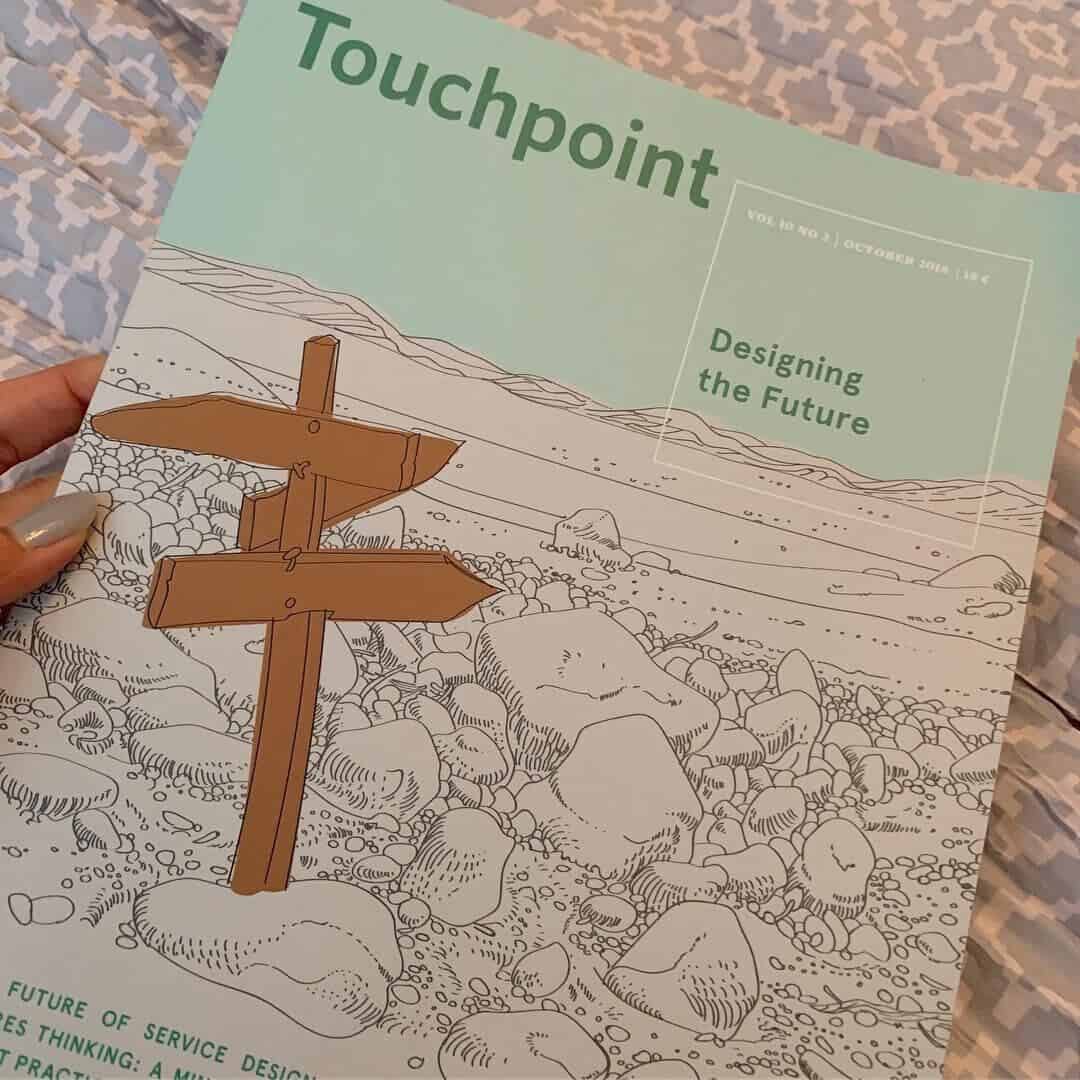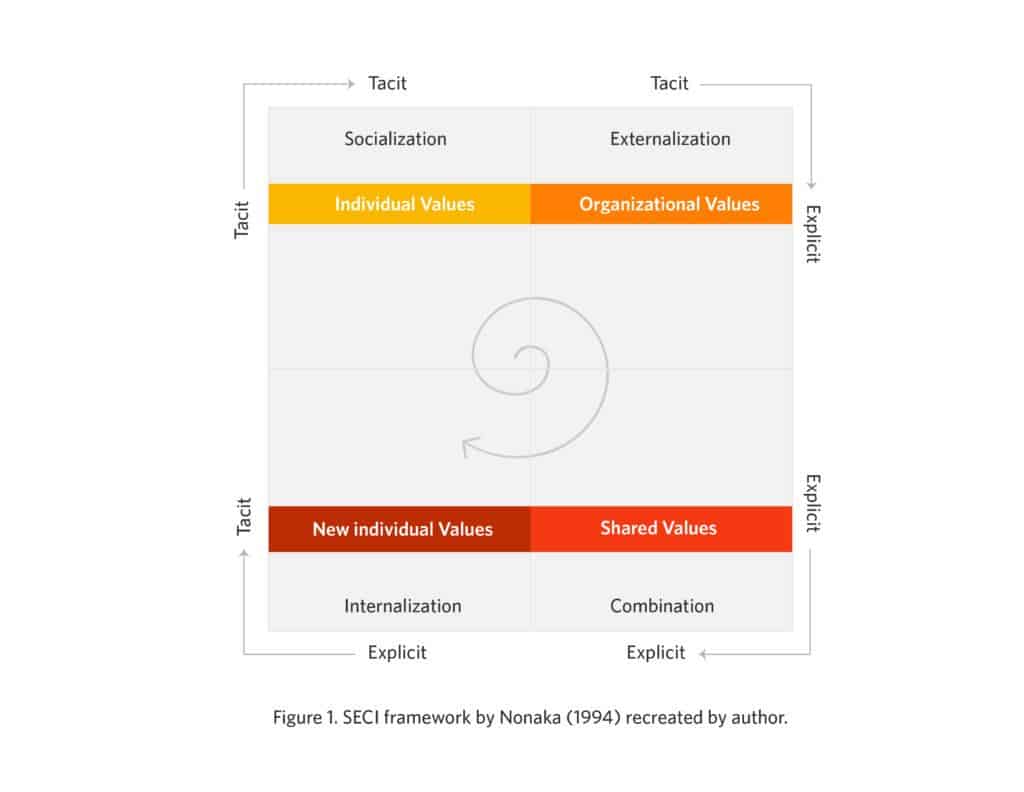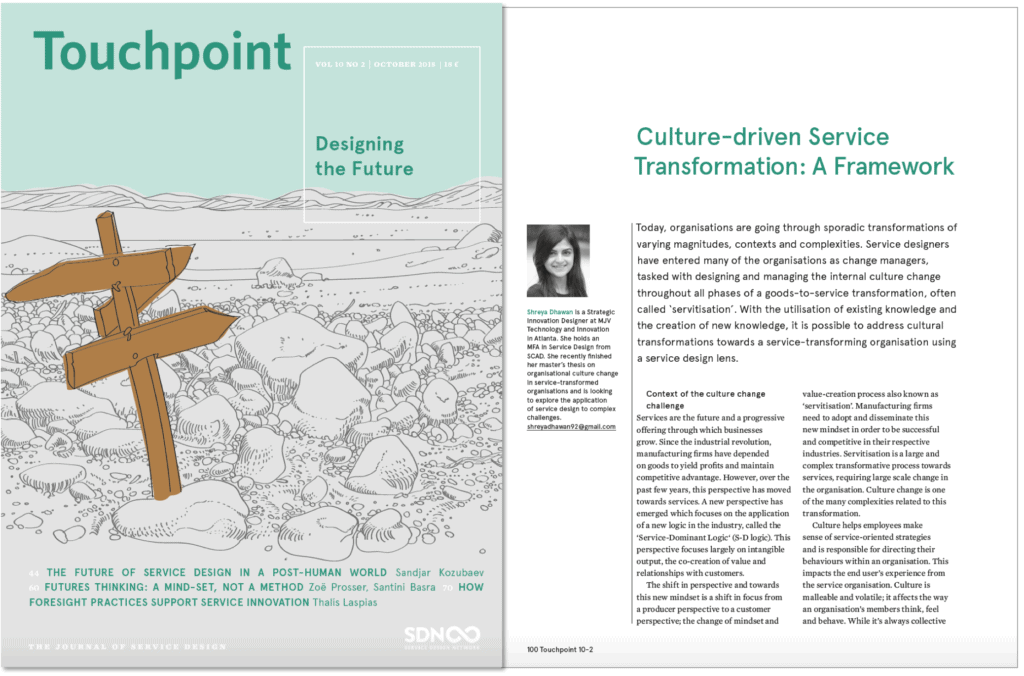

This abstract is from my article in Touchpoint Vol.10 No.2 – Designing the Future. Touchpoint, the Journal of Service Design is published by the Service Design Network and is available to purchase in print and PDF format at wwww.service-design-network.org/touchpoint .
In the context of organizational culture change, this study explores the service design perspective on the challenges of the organizational transition from goods to service, often called as servitization in organizations (Vandermerwe & Rada, 1988). Originally presented by Vargo & Lusch in 2004 for service marketing, Service-Dominant logic (S-D Logic) proposes a new understanding that all economies are service economies. But, this view still remains unclear and of difficult implementation for the organizations of today.
This transition from goods to service is very contextual, complex, and challenging in nature and affects all levels of the organization in its own unique ways. With this, it brings in a need for managing this transition for the organization. In an attempt to study the arising complexity within the phenomena of culture change through a service design lens, a research study was conducted in five stages with secondary and primary data collection. The produced data was analyzed with the help of automated text analysis software. The results were synthesized to develop a culture-driven sensemaking framework that could help organizations better navigate this transformation.
Based on utilizing existing knowledge and creating new knowledge within the organization to address the underlying culture shift, the framework has four elements and defines three goals for servitization: competitive offerings through stakeholders expertise, cocreation based on non-transferable ownership, and ongoing innovative customization. The research suggests that these three goals will contribute to a clearer and easier implementation of servitization by the organizations of today.
